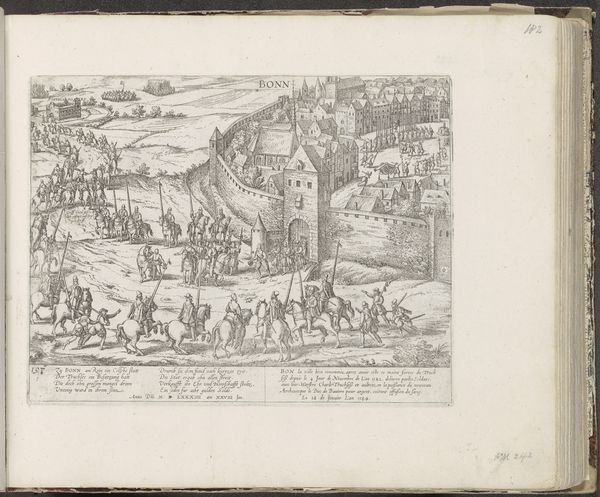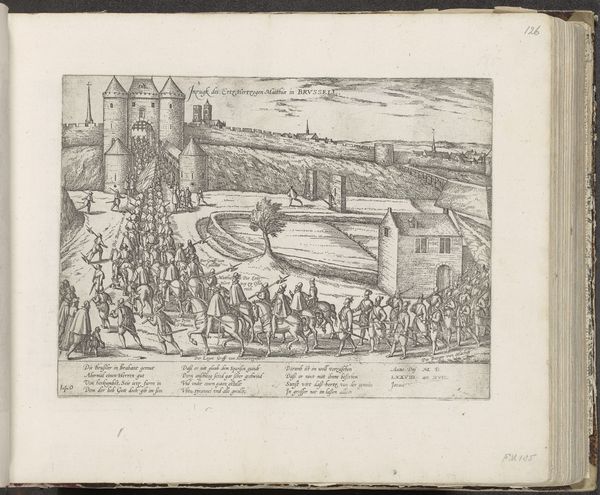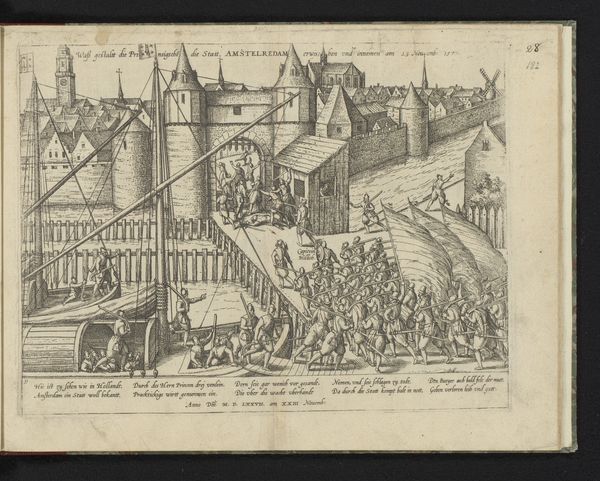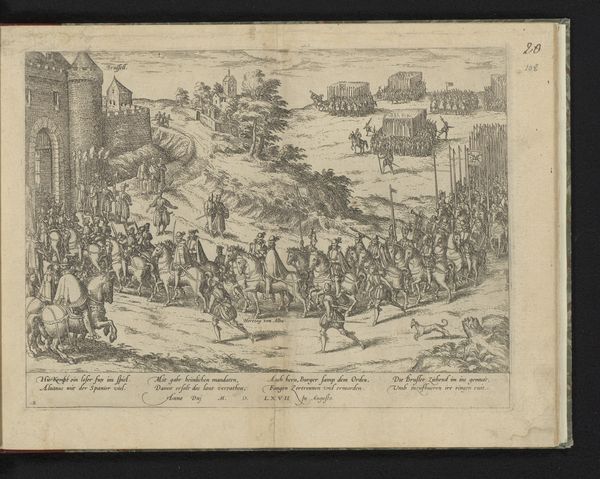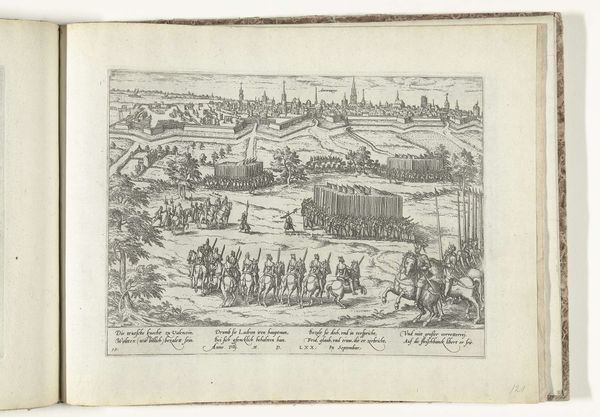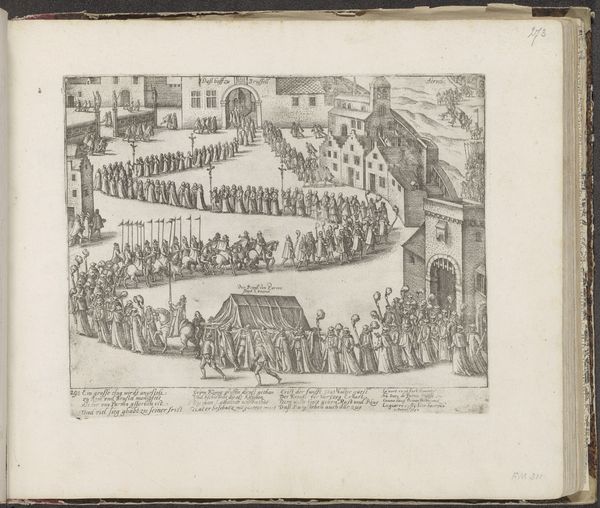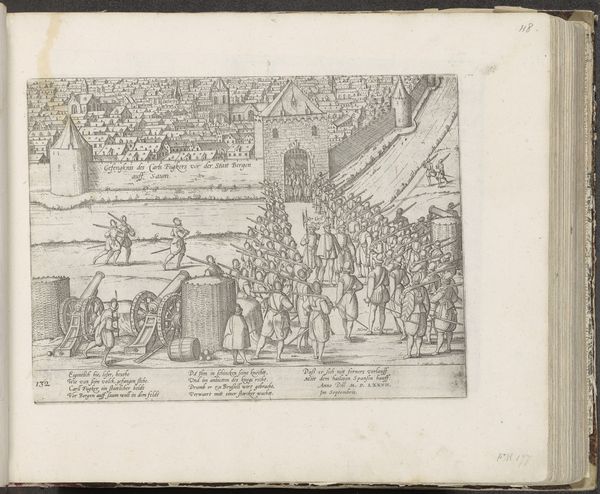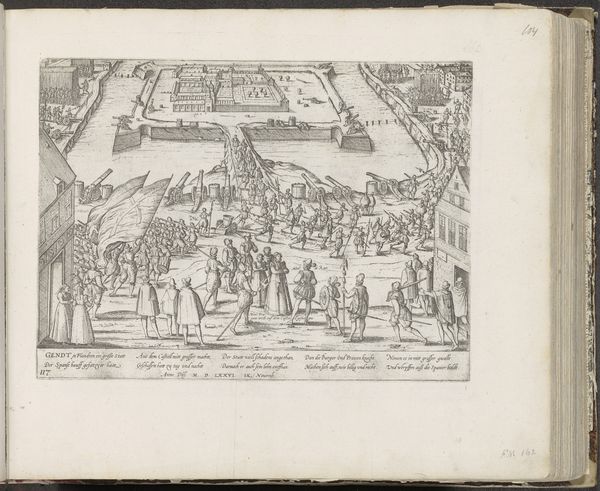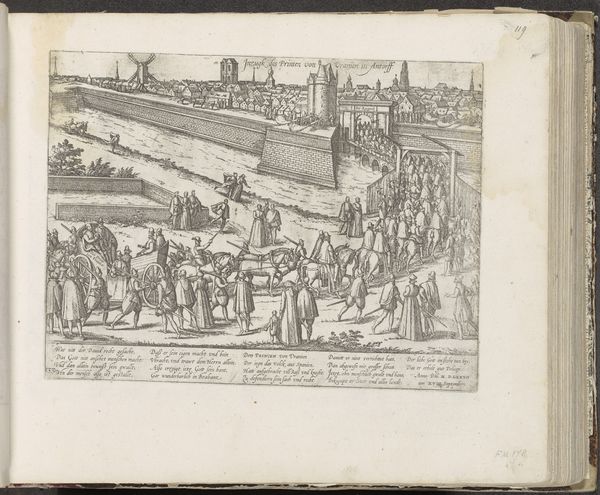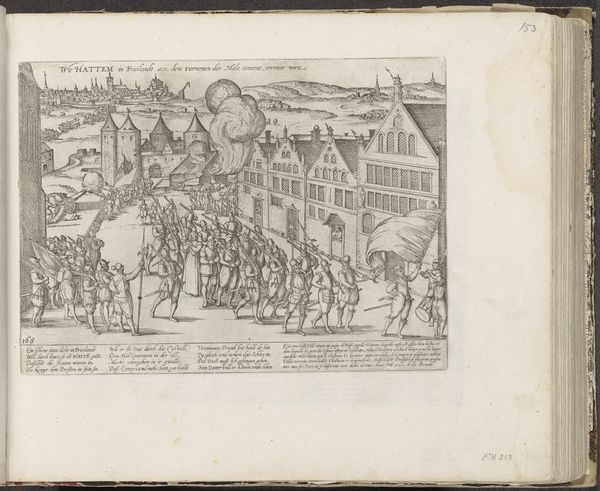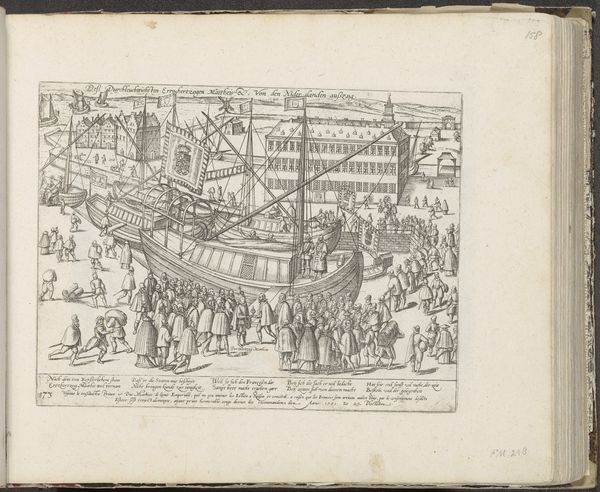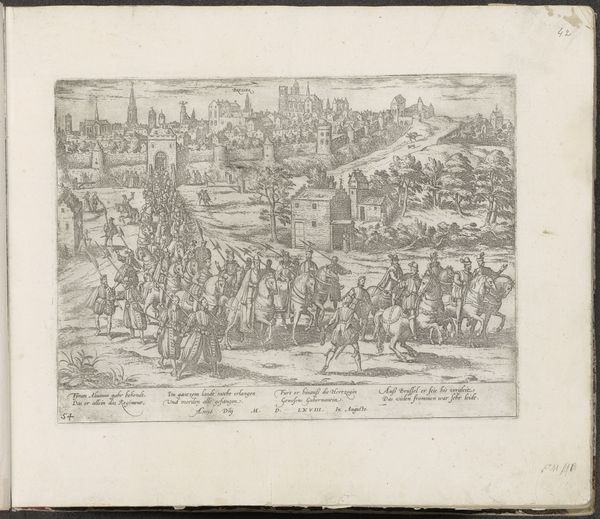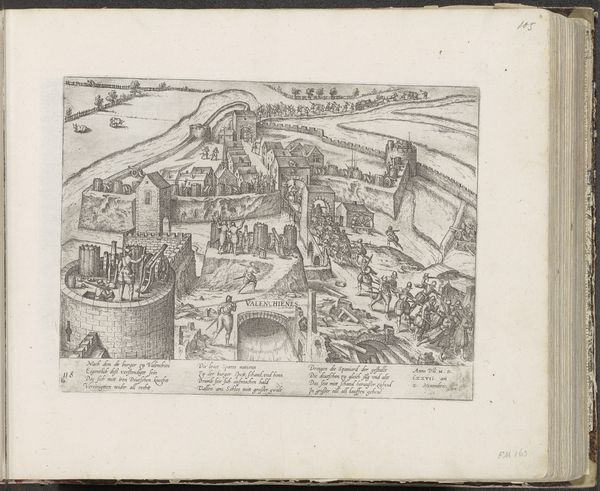
drawing, print, pen, engraving
#
drawing
#
toned paper
#
pen drawing
# print
#
pen sketch
#
sketch book
#
landscape
#
personal sketchbook
#
ink drawing experimentation
#
pen-ink sketch
#
pen work
#
sketchbook drawing
#
pen
#
history-painting
#
northern-renaissance
#
sketchbook art
#
engraving
Dimensions: height 217 mm, width 284 mm
Copyright: Rijks Museum: Open Domain
Editor: This is “Intocht van Don Juan te Brussel, 1577,” or “Entry of Don Juan in Brussels, 1577,” by Frans Hogenberg. It was created sometime between 1581 and 1585 and is a pen and engraving print on toned paper. It gives the impression of a meticulously rendered historical record. How do we read this work today? Curator: That's a great starting point. Given that it’s an engraving meant to record a historical event, we need to think about this image’s public role. Who was Hogenberg trying to reach and what was he trying to say about Don Juan’s entry into Brussels? Was it celebratory or critical? Editor: So it’s less about artistic expression and more about propaganda? Curator: Not necessarily. Consider that Hogenberg, working during the Northern Renaissance, was likely influenced by the Protestant Reformation and the Dutch Revolt against Spanish rule. Therefore, the act of representing this entry carries significant weight. How might the intended audience, viewing this imagery, have understood it? Editor: Perhaps with some skepticism? If Hogenberg’s work coincides with the rise of print culture, it becomes a form of political commentary accessible to a broader audience, rather than a purely objective document. Curator: Exactly! And the scale of this, presented as a print, is something to keep in mind as well. It moves the depiction from something only accessible to those connected to the royal court to a public statement. Can we see this artwork as an early form of political illustration? What do you think? Editor: I now see how its significance stems from the context of the Dutch Revolt, making it a powerful statement reflecting a critical perspective. Curator: Indeed. Considering the artwork's context, it shows us how an ostensibly neutral image becomes charged with socio-political meaning. Editor: I understand now. Looking at it this way, even seemingly straightforward historical depictions carry complex and layered intentions.
Comments
No comments
Be the first to comment and join the conversation on the ultimate creative platform.
